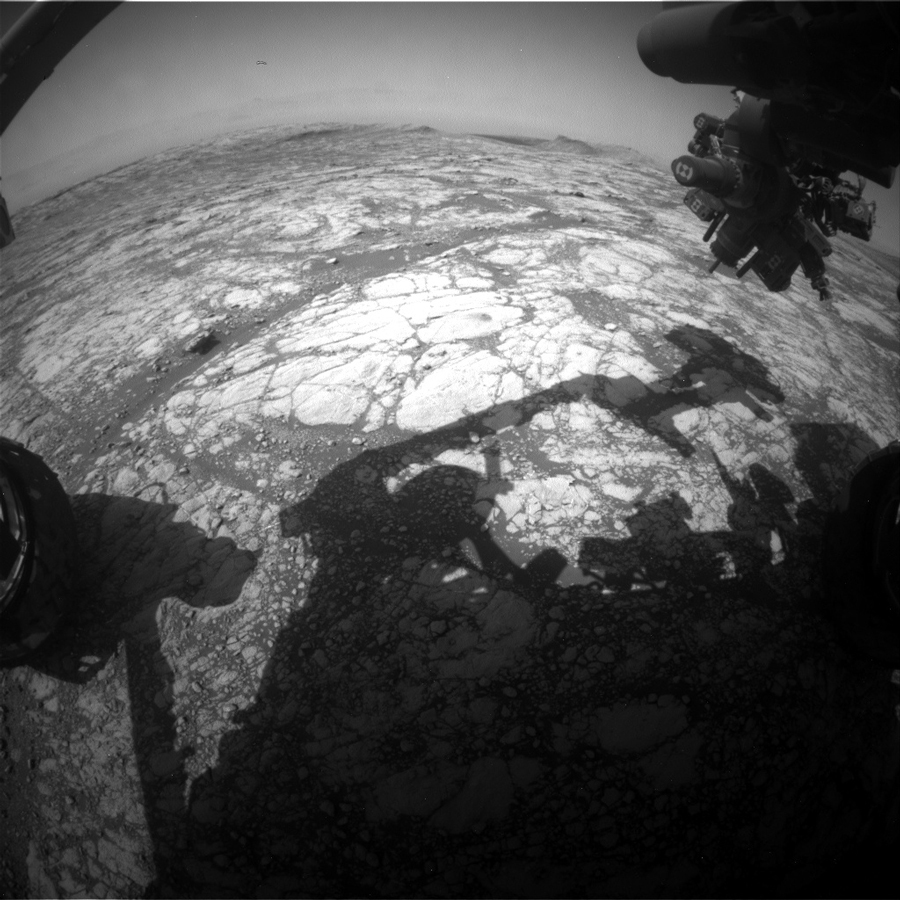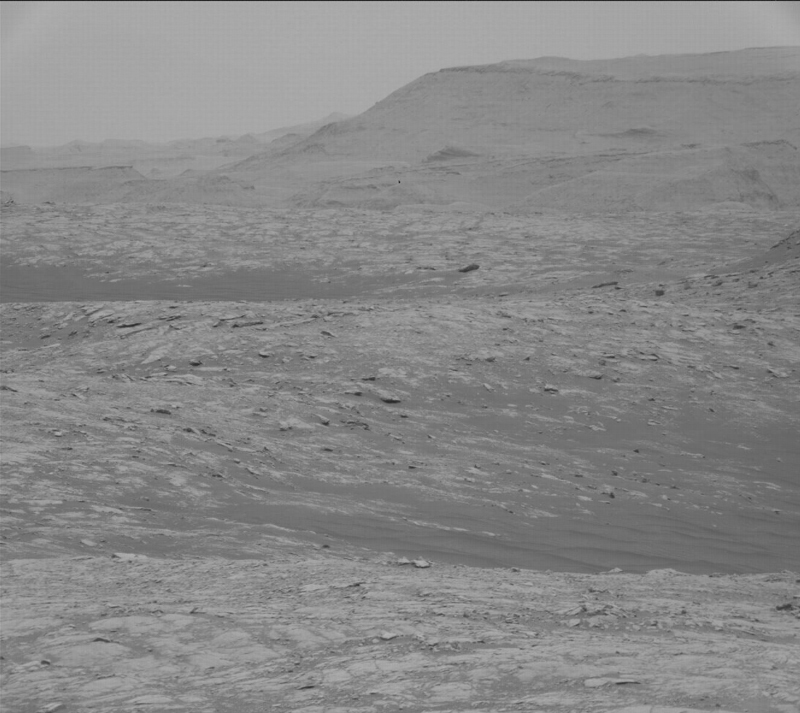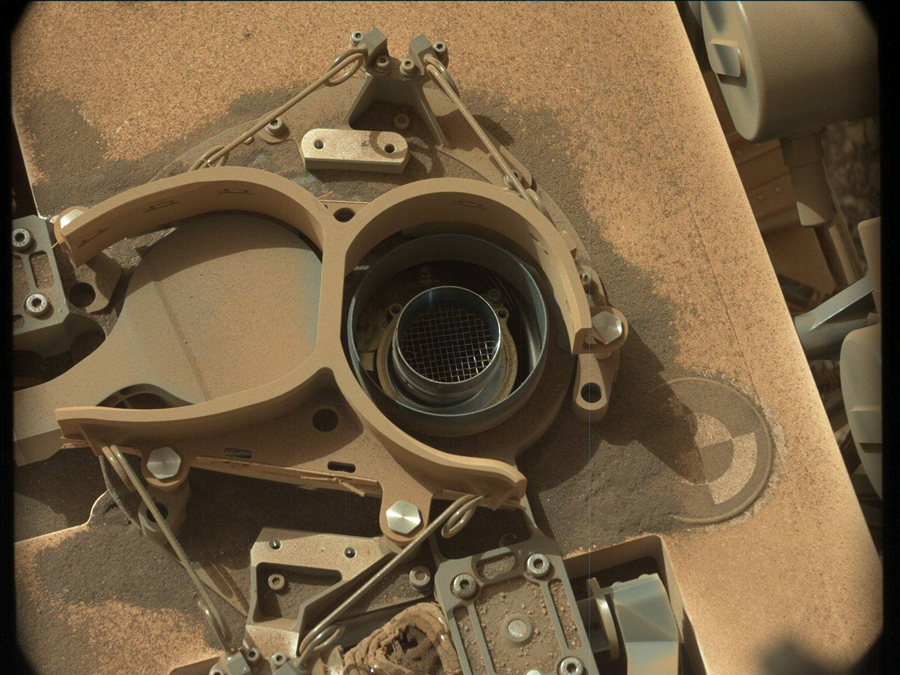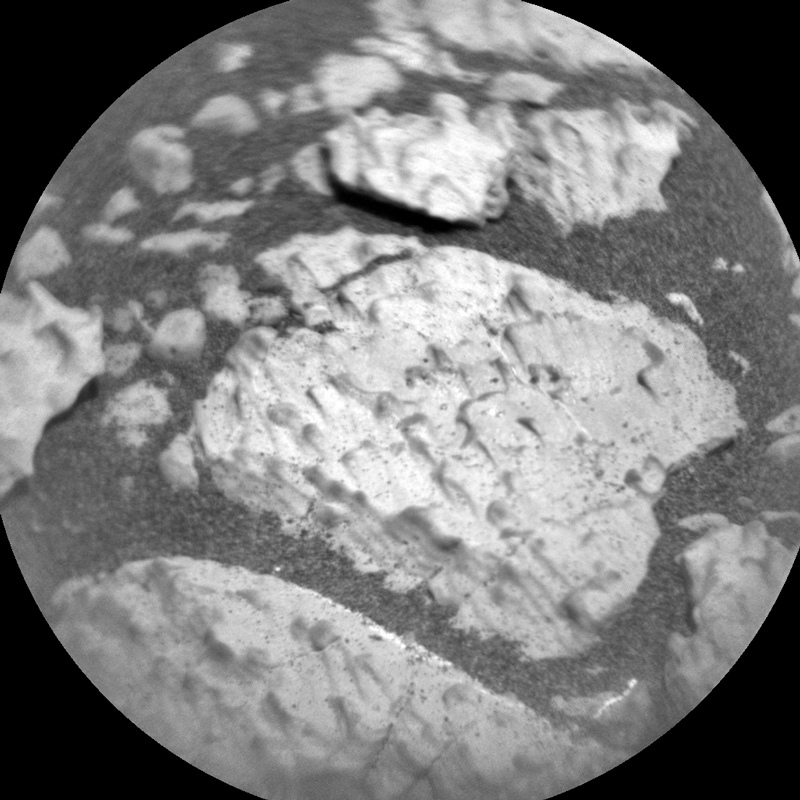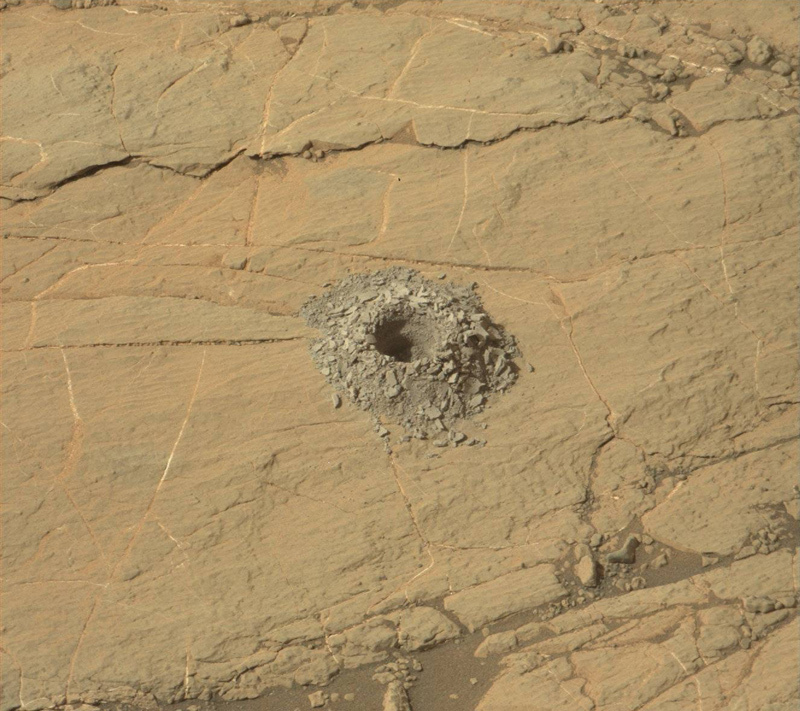May 26, 2020
Sols 2775-2777: Final Activities at 'Glasgow'
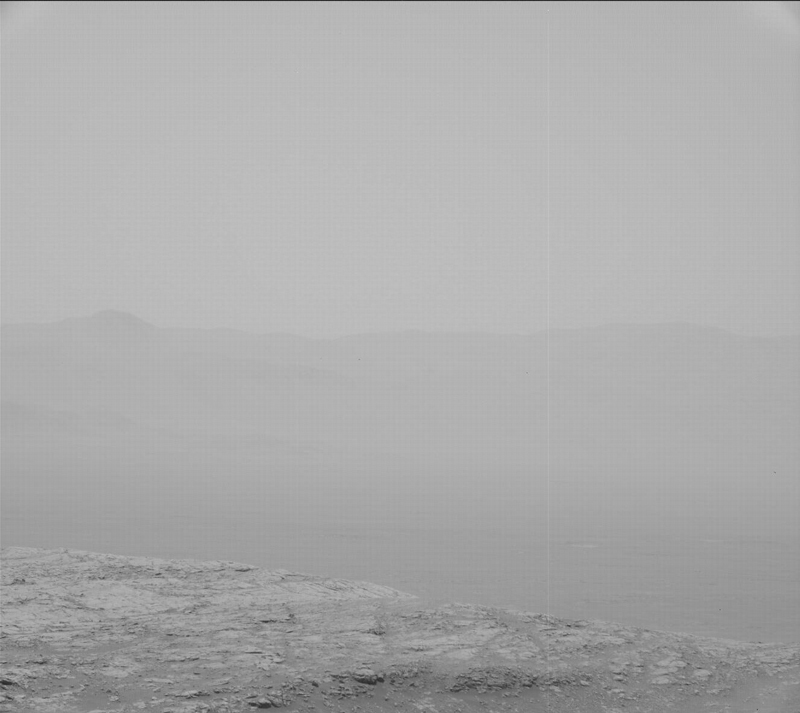
This image was taken by Mast Camera (Mastcam) onboard NASA's Mars rover Curiosity on Sol 2772. Credits: NASA/JPL-Caltech/MSSS. Download image ›
Curiosity is finishing up at “Glasgow,” having spent almost exactly one month here. A decision will be made shortly whether to do another drill hole nearby, or possibly back at “Glen Etive,” or forego another drill operation. The drill material would be used for a wet chemistry experiment by SAM before Curiosity leaves the clay-bearing unit. Once all the drilling is finished, Curiosity is scheduled to hit the road (in this case only figuratively, since no roads exist on Mars) toward the sulfate unit.
Meanwhile, it’s that time of the Mars year (southern spring) when we expect more dust storm activity. The last Mars global dust storm started almost exactly two Earth years ago, and knocked out the plucky Opportunity rover. The reduction of sunlight during that dust storm, which grew to become global, was too much for that solar-powered rover. Fortunately, Curiosity had no issues, thanks to its nuclear power pack. Even so, global storms - which only occur in about one in three Mars years - are fascinating events to study, as we still don’t fully understand how they begin or how they grow to become global. So the team has been watching for signs of another global storm by making more frequent measurements of ‘tau’ (the opacity of the dust column above the rover) and other indicators of local dust activity, and also by checking the shape of the daily pressure cycle, which is very sensitive to the planet-wide dust distribution. Over the weekend, tau rose slightly, but this sort of variability is typical of the past few months. It’s still within normal seasonal values and does not indicate a major dust storm is beginning. The accompanying image is a horizon view from Sol 2772 showing decreased visibility inside the crater due to increased dust levels.
Never daunted by a little dust, Curiosity is busy packing in the last activities at “Glasgow.” We are planning three sols of activity, and every single instrument gets in on the act. APXS will do an evening analysis of the dump pile, and an overnight observation of the drill tailings, with follow-up MAHLI images. ChemCam and Mastcam will do observations of “Hiort” and “Fishnish.” ChemCam will take an RMI mosaic of “Ptarmigan,” which is another view of the top of “Tower Butte.” Mastcam will take a Sun tau measurement, and will take a multispectral image of the “Glasgow” dump pile. It will also image “Salmons Burn,” a possible meteorite. MARDI will take an image of the ground below the rover, and Navcam will take dust-devil movies. CheMin and SAM both have activities supporting their experiments. DAN, REMS, and RAD will also take data.

